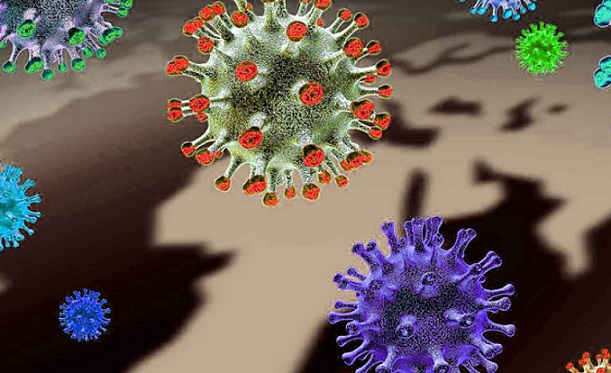Study Now Reveals That Omicron Variants Like EG.5.1, HK.3 and XBB.1.9.1 Are More Lethal and Transmissible Than Earlier BA.2 Variants
Nikhil Prasad Fact checked by:Thailand Medical News Team Nov 24, 2025 3 hours, 6 minutes ago
Medical News: New Findings Show Troubling Shifts in Omicron Behavior
A major new study conducted by leading scientists from the Changchun Veterinary Research Institute of the Chinese Academy of Agricultural Sciences, the College of Veterinary Medicine at Northeast Agricultural University, the College of Veterinary Medicine at Shanxi Agricultural University, the College of Life Sciences at Northeast Normal University, the State Key Laboratory of Reproductive Medicine and Offspring Health at Nanjing Medical University, the College of Wildlife and Nature Reserves at Northeast Forestry University, and the Jiangsu Co-Innovation Center for Prevention and Control of Major Animal Infectious Diseases has revealed alarming differences between newer Omicron variants and earlier Omicron strains. According to this
Medical News report, the EG.5.1, HK.3 and XBB.1.9.1 subvariants show higher lethality and more efficient transmission than the previously dominant BA.2 strain.
 New data shows EG.5.1 HK.3 and XBB.1.9.1 spread faster and cause more severe effects than BA.2
New Variants Multiply Faster and Use Human Cells More Efficiently
New data shows EG.5.1 HK.3 and XBB.1.9.1 spread faster and cause more severe effects than BA.2
New Variants Multiply Faster and Use Human Cells More Efficiently
In a series of experiments using multiple human-derived cell lines, the researchers found that HK.3 in particular replicates far faster than BA.2, EG.5.1 and XBB.1.9.1. HK.3 reached peak viral levels much earlier and showed an extraordinary ability to use the TMPRSS2 enzyme, which helps SARS-CoV-2 fuse with human cells. EG.5.1 and XBB.1.9.1 also demonstrated stronger cellular invasion abilities than BA.2, and all three variants showed improved binding to ACE2 receptors. These changes mean the virus can infect tissues more rapidly and at higher levels, raising concerns about its potential to spread more aggressively.
Animal Studies Reveal Higher Disease Severity and Enhanced Transmission
Using standard wild-type hamsters and specialized hACE2 hamsters that mimic severe human infection, the study showed that EG.5.1 and HK.3 caused faster weight loss, earlier onset of symptoms and higher mortality than BA.2. HK.3 and EG.5.1 reached a 100 percent fatality rate by day 5 in the hACE2 model, compared to BA.2 which reached full lethality only by day 7.
Transmission tests showed all three new variants spread through the air far more efficiently than BA.2. XBB.1.9.1 infected every exposed hamster, while EG.5.1 and HK.3 also transmitted well but with some variation in lung and nasal infections.
Tissue analysis revealed more airway blockages and extensive shedding of infected cells in EG.5.1 and HK.3 infections, conditions that can severely limit breathing.
Conclusions
This important research confirms that newer Omicron lineages—EG.5.1, HK.3 and XBB.1.9.1—possess biological advantages that may increase both the severity and spread of COVID-19. Their faster replication, strong use of TMPRSS2, efficient airborne transmission and greater tissue damage in animal models suggest that the evolutionary path of Omicron is moving toward variants that be
have more aggressively than BA.2. Although human outcomes vary, these findings highlight the urgent need for continuous global surveillance. Failure to monitor and prepare for these rapidly adapting variants could allow sudden surges, increased hospitalizations and unexpected disease complications.
The study findings were published in the peer reviewed Journal of Virology.
https://journals.asm.org/doi/10.1128/jvi.01342-25
For the latest COVID-19 news, keep on logging to Thailand
Medical News.
Read Also:
https://www.thailandmedical.news/articles/coronavirus
